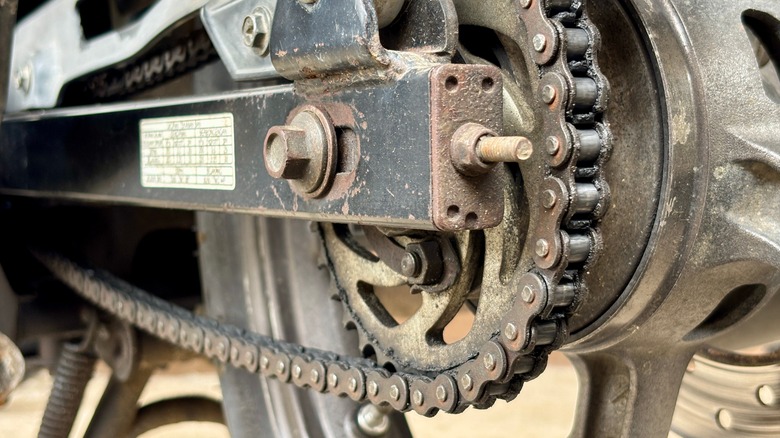How To Tell If Your Motorcycle Sprockets Need Replaced
Motorcycle sprockets go through constant rotation, and yet you might not think of them as part of your maintenance checklist. It's one of the most common mistakes people make with their motorcycles. Considering the amount of wear and tear they go through, sprocket maintenance should probably become a top priority. Riders can spot failing sprockets by looking at the shape and condition of the teeth. They should have squared or smoothly radiused tips when new, which means when those teeth look sharp, pointed, or start to hook in one direction, they're in need of a replacement.
Think about it: Every time the chain's rollers engage with the sprocket's teeth, they grind just a little more off the sprocket. Repeat that thousands upon thousands of times, and eventually, there's not going to be as much left on the sprocket's teeth as there was before. The front and rear sprockets don't always wear at the same rate, either, so it's not hard for one bad one to go undetected if the other seems fine.
When looking at your sprockets, pay attention to any consistent tooth valleys, uniform radiuses, or otherwise flattened or distorted areas. Because new sprockets and chains are manufactured to fit together precisely, you should be able to spot mismatched components or wear pretty easily. (This precise fit is also why pros recommend replacing the chain and sprockets together as a set, even if one component isn't as worn as the other.)
Other ways to tell if a motorcycle sprocket is worn out
Even if you don't notice the teeth being worn down, the condition of your chain can also clue you in on the health of your motorcycle sprockets. A chain that pulls away from the rear sprocket far enough to reveal more than half of a tooth is one big sign. Uneven engagement between the sprocket and the chain, tight spots, or extra driveline noise are other indications that the sprocket's worn and can't mesh cleanly with the chain.
In between replacements, make it a habit to clean and lubricate the motorcycle chain with kerosene or chain-safe cleaner, scrub away any debris, and reduce friction between the chain plates, pins, and sprocket teeth. Sealed chains only require outer-plate lubrication, while standard chains need lubricant applied between every link. Adjusting your motorcycle's chain slack is also important. A chain that's too loose can cause jerky acceleration and premature wear, while one that's too tight can damage transmission bearings.

